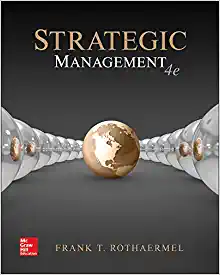Ryanair based in Dublin, Ireland, has been renowned in Europe as a firm that can make a
Question:
Ryanair based in Dublin, Ireland, has been renowned in Europe as a firm that can make a profit on a $20 ticket by imposing numerous fees and surcharges. The airline has sought to be the lowest of the low-cost providers in the EU with a “no frills get you from point A to B model.” Ryanair is on record as saying it wants to be the “Amazon.com of travel in Europe” by bringing in competitors’ price comparison, hotel discounts, and even concert tickets. Check out the company website (www.ryanair.com) and consider the questions that follow.
1. If you were a competitor in the European market, such as British Airways or Lufthansa, how would you compete against Ryanair, knowing your cost structure would not allow price parity? If you were a low-cost leader like EasyJet, how would you compete against Ryanair?
2. What similarities and differences do you find about Ryanair compared to Jet Blue from Chapter Case 6?
Data from in Jet Blue from Chapter Case 6
WHEN JETBLUE AIRWAYS took to the skies, founder David Neeleman set out to pursue a blue ocean strategy. This type of competitive strategy combines differentiation and cost-leadership activities using value innovation to reconcile the inherent trade-offs in those two distinct strategic positions. How is this done, and where did Neeleman’s ideas come from?
At the age of 25, the young entrepreneur co-founded Morris Air, a charter air service that in 1993 was purchased by Southwest Airlines (SWA). Morris Air was a low-fare airline that pioneered many cost-saving practices that later became standard in the industry, such as e-ticketing.
After working as an airline executive for SWA, Neeleman went on to launch JetBlue in 2000. When Neeleman established JetBlue, his strategy was to provide air travel at even lower costs than SWA. At the same time, he wanted to offer better service and more amenities than the legacy carriers such as American, Delta, or United. To sum it up, JetBlue’s Customer Bill of Rights declares its dedication to bringing humanity back to air travel.
To implement a blue ocean strategy, JetBlue focused on lowering operating costs while driving up perceived customer value in its service offerings. In particular, JetBlue copied and improved upon many of SWA’s cost reducing activities. It initially used just one type of airplane (the Airbus A-320) to lower the costs of aircraft maintenance and pilot and crew training. It also chose to fly point to point, directly connecting highly trafficked city pairs. JetBlue specialized in transcontinental flights connecting the East Coast (e.g., from its home base in New York) to the West Coast (e.g., Los Angeles). In contrast, legacy airlines such as American, Delta, or United use a hub-and-spoke system. This type of operating model connects many different locations via layovers at airport hubs.
The point-to-point model focuses on directly connecting fewer but more highly trafficked city pairs. This model lowers costs by not offering baggage transfers and schedule coordination with other airlines. In addition, JetBlue flies longer distances and transports more passengers per flight than SWA, further driving down its costs. Initially, JetBlue enjoyed the lowest cost per available seat-mile (an important performance metric in the airline industry) in the United States.
Step by Step Answer:






